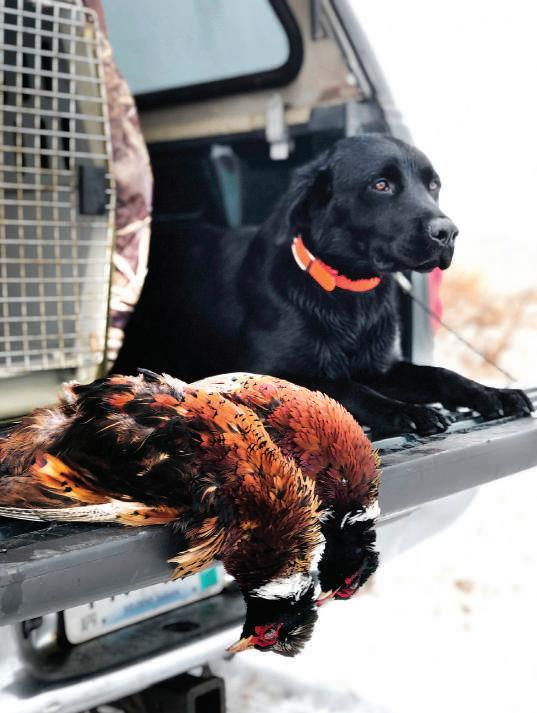
3 minute read
Pheasants are there to chase this fall
Pheasants are there
to chase this fall Eric Morken Krebs of Alexandria said. emorken@echopress.com Birds like the pheasant that have such a short lifespan to begin with are so “When we get good weather in June, the pheasants are designed to really increase or explode their population when they have favorable nesting conditions. We had really fadependent on annual hatches vorable nesting conditions to produce big numbers each this year, and this is the result fall. of that.”
Marginal or poor habitat This year’s statewide pheaand wet springs can lead to sant index was 53.5 birds per tough seasons chasing roos- 100 miles of roads driven. All ters. Quality habitat can help regions of the pheasant ransustain numbers every year, ge reported an increase in and a dry spring during the pheasant counts, with the June nesting season can help southwest reporting the greapopulations jump considera- test increase. There, observers bly in one year. That seems to counted 90.5 birds per 100 be what pheasants got across miles. much of their range in Minne- The areas of Douglas, Pope, sota in 2020. Todd and Stearns Counties
The Minnesota Department run the gamut on the 2020 of Natural Resources on Sept. pheasant hunting prospects 8 released the results of its map from poor (10-24 birds/ annual roadside survey that square mile) to good (greater showed the number of phea- than 49 birds/square mile). sants counted up 42% over That prospects map is inten2019 and 37% above the 10- ded to be a general indicator year average. The pheasant of the upcoming fall hunting increase hit an astounding season based on count num146% over 2019 in the state’s prime pheasant habitat in southwestern Minnesota. bers. But areas considered poor overall can have areas of great habitat within them that Black lab, Gus, sits on the tailgate after flushing and retrieving a couple of Minnesota roosters late last November. The 2019 season produced some great
“It really comes as no sur- will carry plenty of birds, and hunts across the state in areas of good habitat, and this year’s roadside count prise to me given the weather vice versa. from the DNR’s annual survey showed pheasant numbers increasing by 42% that we had this spring,” Dou- “There’s places where we statewide from the 2019 survey, setting up what could be a good fall for huntglas County Pheasants Fore- were jumping 20, 30, 40 birds ers. (Eric Morken / Echo Press) ver chapter president Dean in down years,” Krebs said. “If you have good habitat, you’re the loss of grassland habitat
“We saw and heard a lot of birds this year going to see that. It’s that marginal habitat where you really taken out of the federal Conservation Reserve Program on while turkey hunting. That’s a little bit anecdotal because it’s just one spot, but get that hit in down years.” To put this year’s count into an historical perspective, the private lands. “It was nice to see. It’s a prediction based on roadside even driving to and from in the areas where 53 birds per 100 miles coun- counts, but it’s crazy how acwe go, we saw a lot more pheasants in the spring than we had in many years. We kept ted is still just a fraction of the more than 300 birds per 100 miles counted in the 1950s curate they are a lot of times,” Krebs said. “When you have good news like this, that’s saying, ‘If we get a good hatch, this is going and well below recent highs also represented in the licento be a good year.’ I think we pulled off a phenomenal hatch.” of over 100 birds per 100 miles in the early 2000s. Still, it’s good news for phease sales. We’re going to see an uptick in pheasant hunters by quite a bit I would guess Dean Krebs sant hunters in the state after the bird’s numbers dropped this year because people are Douglas County Pheasants Forever chapter president over the past decade due to PHEASANT page 14






